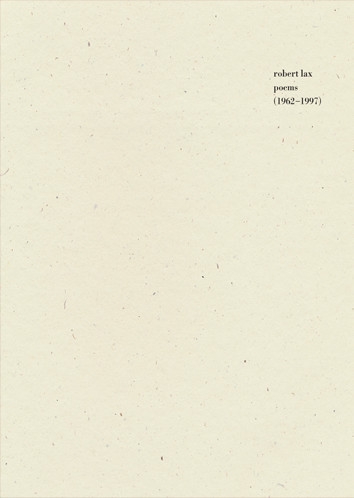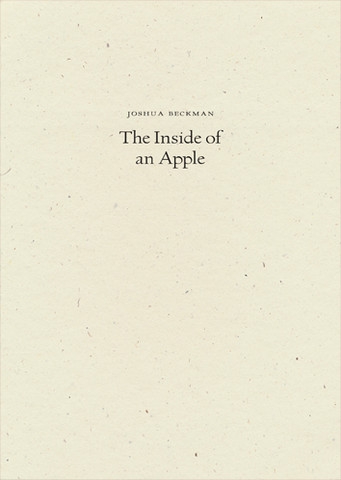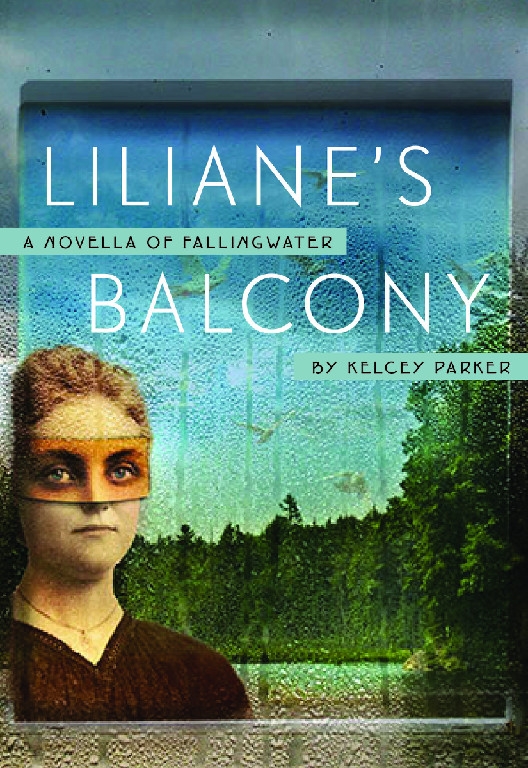Detroit as Barn
William Carlos Williams famously wrote, “It is difficult to get the news from poems.” However, Crystal Williams’s third book of poetry, Detroit as Barn, is lacking neither in news nor in difficult truths between the lines (between the minds) of those she writes about. Her poetry engages with the question of how to live with what changes and also with what stays uncomfortably the same, stuck in a rut. The collection is centered on real moments where history seems to sit on a struggling city and its people, yet there is also a central wonder throughout the book about the “life beneath this life,” a reminder that history is shimmering, that it is not one thing.

 Poems (1962-1997), a new collection from Wave Books, presents 35 years’ worth of work from avant-garde poet Robert Lax. An enigma even in the weird world of poetry, Lax (1915-2000) was educated at Columbia University, where he met lifelong friend Thomas Merton and studied with poet Mark Van Doren. He served over the years as a critic, editor, and writer for TIME, Parade, and The New Yorker, among other publications, although he identified himself as a poet first and foremost. As a young man, he spent a season traveling through Canada with the Cristiani family circus, which eventually led to his first book of poetry, The Circus of the Sun.
Poems (1962-1997), a new collection from Wave Books, presents 35 years’ worth of work from avant-garde poet Robert Lax. An enigma even in the weird world of poetry, Lax (1915-2000) was educated at Columbia University, where he met lifelong friend Thomas Merton and studied with poet Mark Van Doren. He served over the years as a critic, editor, and writer for TIME, Parade, and The New Yorker, among other publications, although he identified himself as a poet first and foremost. As a young man, he spent a season traveling through Canada with the Cristiani family circus, which eventually led to his first book of poetry, The Circus of the Sun.  Joshua Beckman is an editor at Wave Books, and The Inside of an Apple is his seventh poetry collection. At its best, his poetry is composed of whimsical snapshots, reminiscent of haikus, as in this moment halfway through “Being in ways”:
Joshua Beckman is an editor at Wave Books, and The Inside of an Apple is his seventh poetry collection. At its best, his poetry is composed of whimsical snapshots, reminiscent of haikus, as in this moment halfway through “Being in ways”:  “Each material has its own message and, to the creative artist, its own song. Listening, [s]he may learn to make the two sing together.” Frank Lloyd Wright knew the art of crafting a structure that complements the space it inhabits. And as he suggests, artists must make music from the intersection of materials and messages. Like Frank Lloyd Wright’s infamous Fallingwater (the setting for this book), Liliane’s Balcony is an architectural treat. Form and content are married perfectly in Kelcey Parker’s novella. Even the font and structure of the book were intentionally engineered. The font is influenced by Frank Lloyd Wright and the time period in which he created Fallingwater, and each symbol beneath the chapter’s heading is taken from Wright’s own Prairie-style geometric patterns. The various narratives speaking throughout the novella operate like the various cantilevers and balconies of Fallingwater, allowing the reader to step out into a new narrative, but always ducking back inside to the narrative of Liliane.
“Each material has its own message and, to the creative artist, its own song. Listening, [s]he may learn to make the two sing together.” Frank Lloyd Wright knew the art of crafting a structure that complements the space it inhabits. And as he suggests, artists must make music from the intersection of materials and messages. Like Frank Lloyd Wright’s infamous Fallingwater (the setting for this book), Liliane’s Balcony is an architectural treat. Form and content are married perfectly in Kelcey Parker’s novella. Even the font and structure of the book were intentionally engineered. The font is influenced by Frank Lloyd Wright and the time period in which he created Fallingwater, and each symbol beneath the chapter’s heading is taken from Wright’s own Prairie-style geometric patterns. The various narratives speaking throughout the novella operate like the various cantilevers and balconies of Fallingwater, allowing the reader to step out into a new narrative, but always ducking back inside to the narrative of Liliane.